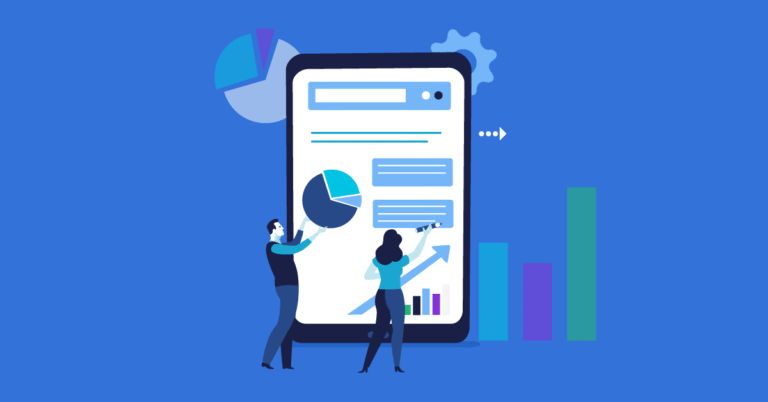
How a Certified Care Manager Eliminates Paper and Maximizes Billable Hours
01/17/2018 By Bill4Time Staff
Time is money for professionals who rely on billable hours to keep their business running. Managing billable and non-billable time can be hard to balance, learn how Laurel Etheridge maximizes her time.
Laurel Etheridge is owner of Etheridge Care Management, a geriatric care management company specializing in dementia and memory loss. Her company serves families and professional fiduciaries in Northern California, specifically Marin and Sonoma counties, and San Francisco.
Unlike a home health aide or caregiver, Etheridge manages the complex ‘circle of care’ that supports her aging clients. She has professional certification from the National Academy of Certified Care Management and is an Advanced Professional member of the Aging Life Care Association (formerly the Geriatric Care Manager’s Association). Care managers practice in eight different knowledge areas including health and disability, legal, financial, housing, families, local resources, advocacy and crisis intervention.
Care management is designed to help families manage the complexities of growing old,” explains Etheridge. “A lot of clients don’t even know where to start or what questions to ask. I help families to develop, then manage, a circle of care for a loved one.”
Like an attorney, Etheridge bills for her time in six-minute increments. She attends to 15 different regular clients, on average, each month, and spends most of that time out of her office, visiting hospitals, residential care facilities or meeting with doctors, lawyers, fiduciaries, or other professionals. She also does consultations and special projects such as moving a client from home to a care setting.
Some of my clients may require only a few hours per month while others have complex needs that require much more help,” said Etheridge. “Our minimum requirement for ongoing service is that we need to meet with each client at least one time each month.”
When she started her business 7 years ago, Etheridge did not use any time-billing software, just a notebook to record client activities. As her business grew, the limitations of paper became more noticeable when managing her billable hours.
In the beginning I only had a few clients, so a paper-based system seemed simpler,” said Etheridge. “Yet I was creating each bill by hand, transposing task descriptions from a notebook to an invoice template, adding up the hours, then adding on expenses. When a subcontractor sent her invoices, I had to re-enter all the dates and descriptions. It didn’t help when she used a different naming convention for tasks…I had to translate and then catch those inconsistencies.”
After about a year of paper, Etheridge began using Bill4Time.
I chose Bill4Time based on a recommendation from another care manager,” said Etheridge. “I liked the fact that I could use my iPhone to capture all my billable time. I can enter a description of what I did, and be very specific, immediately after the event, when the details are fresh.”
According to Etheridge, her invoices are so specific and detailed that she’s never had a client challenge.
Another benefit of a cloud-based time & billing system is the ability to record time entries whenever, wherever.
Because I am so busy with visiting clients, I never enter my time on the desktop,” explains Etheridge. “I can be away from my desk for three or four days every week. So, I document all my time using Bill4Time’s iPhone app, which syncs to the ‘cloud’ and then my desktop.”
Staying Efficient with Billable Hours
While Etheridge was new to being a sole proprietor, she started her company with more than 20 years’ experience in the field, working as a director and care manager with a large eldercare services agency, as well as executive director of a dementia-specific assisted living community. Her experience taught her to immediately focus on systems and procedures that minimized non-billable hours.
To be successful, a care manager has to achieve an 80% billable-time ratio,” says Etheridge. “Given the pressures of the job, and the amount of documentation associated with elder care, it is an extremely difficult to target to achieve.”
To stay efficient, Etheridge takes steps to minimize paper-based records whenever possible, and avoid unnecessary complexity in her software.
I tried a standard accounting software package (QuickBooks) for invoicing, but quickly gave up on it,” said Etheridge. “It was just too complex and time consuming to use. Instead, I used Bill4Time for all my time collection, invoicing and reporting. I don’t feel the need to use accounting software…or even hire a bookkeeper!”
I do my billing at the beginning of the month,” said Etheridge. “When I first started out with a paper-based system, it would take me about 5 to 7 hours to issue invoices for five clients. With Bill4Time, it now takes me about two hours for 15 clients. The longest part of the invoicing process is proofreading, finalizing and emailing the bills.”
Etheridge assigns categories to non-billable, tax deductible expenses within Bill4Time. Then, at tax time, she runs a user summary report, which shows total net revenue (her billable hours less reimbursed expenses), and costs. That information goes directly to the tax form.
For subcontractors, Etheridge runs a separate report that shows her contractor hours. This number goes into her profit and loss statement and helps speed the preparation of IRS 1099 tax forms.
One of the best features of Bill4Time is the ability to run a collections report,” explains Etheridge. “About the third week of the month, I run a report to see who has not yet paid. I send a simple reminder, and get paid. It’s really helped my cash flow.”
Client notes and reporting is another way Etheridge has gone paperless.
For me, everything I’ve done for the client is in Bill4Time,” said Etheridge. “I have detailed, time-stamped notes about each client: when they were hospitalized, when they were discharged. I can instantly run a service summary report to see activities and a timeline.”
Recently a client needed a report showing all the payments made to Etheridge over a 3-year period. She was able to easily run a service summary report, a task that would have required hours of research using a paper-based system.
The difference between trying to use complex accounting software and Bill4Time is night and day,” concludes Etheridge. “Everything I need is contained in Bill4Time.”




